When does it snow in Norway? What’s there to do in Norway in freezing weather? This article will answer all your questions!
Icy fjords, cosy cabins tucked under a blanket of white and frosty mountain peaks that reach towards the dancing northern lights – Norway’s a spectacle when it snows.
Awe-inspiring vistas transform under a fresh snowfall, their contours softened and colours muted, offering a new perspective on this Nordic country’s diverse landscapes.
When you think of snow in Norway, an image of an endlessly frost-covered nation might spring to mind.
But the reality is a tad more complex.
Norway’s snowfall is as varied as its topography, with different regions and months offering a distinctly unique snowscape.
So, when does it snow in Norway, which regions have the most snowfall, and what can you expect from this snowy Scandinavian country?
Let’s delve in – this article is based on my February trip to Norway last year!
When does it snow in Norway?

The snowfall in Norway varies greatly across different regions and months due to its vast geographical expanse and diverse topography.
But generally, the snowy season in Norway typically begins in late October and extends through late April.
Inland areas and regions at higher altitudes tend to have more prolonged periods of snowfall, starting earlier and lasting longer, while coastal areas experience more sporadic snowfall due to the influence of the warm Gulf Stream.
You can keep an eye on AccuWeather for information about snow trends in Norway.
Let’s delve into a month-by-month breakdown.
Snow in Norway in October
As autumn sets in, October begins to introduce the first signs of snow in Norway, particularly in the inland and northern regions.
In these parts of the country, a gradual dusting of snow starts to cover the landscape, hinting at the snowy months ahead.
While the coastal areas and Southern Norway are usually still too mild for any significant snowfall, the high mountains and peaks are already pretty frosty!
Snow in Norway in November
In Norway, November is the harbinger of winter, and snowfall begins to be a common sight, especially in mountainous regions and the northern areas.
The cities might see a light dusting, with flurries gently covering the rooftops and streets.
Snow in Norway in December
Come December, snowfall intensifies across the country.
A peaceful calm descends on the cities and towns, punctuated only by the crunch of boots on fresh snow.
The mountain regions have heavier snowfall, and the winter sports scene is abuzz.
Snow in Norway in January
January sees the heaviest snowfall in Norway.
The days are short and dark – particularly in the North, which experiences Polar Night – and snow showers are a frequent occurrence!
The snow sports scene is in its element too!
Snow in Norway in February
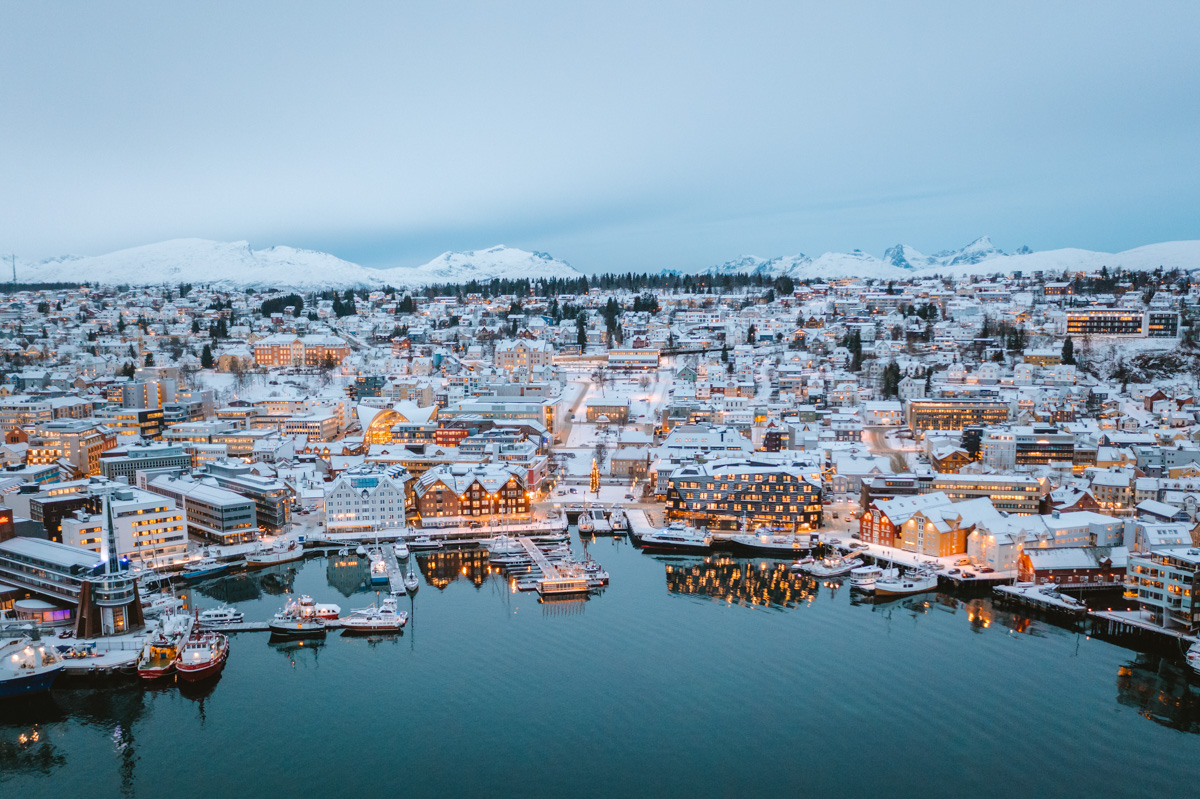
February continues the trend of heavy snowfall, especially in the interior and northern regions.
The southern coastal areas, while less blanketed, still have their fair share of snowy days.
Winter sports enthusiasts find this an excellent time for activities such as skiing or snowboarding.
Snow in Norway in March
The arrival of March signals the beginning of the end of the heavy snow season.
Although snow continues to fall, especially in the northern regions, the intensity begins to lessen.
The warmer weather brings more daylight, slowly melting away the winter’s accumulation of snow.
Snow in Norway in April
In April, the snowfall becomes less frequent.
In the southern regions, it might be replaced entirely by rain!
However, the northern regions and higher altitudes continue to see some snow, keeping their winter charm alive a bit longer!
Snow in Norway in May to September?
From May onwards, Norway enters its snow-free period.
The landscapes make way for the lush greenery of spring and summer.
Some areas, particularly the mountains and the far north, might still witness occasional snowfall, reminding everyone of the winter that will soon return!
Why does it snow so much in Norway?

Norway’s snow-laden winter landscapes are the result of several interconnected geographical and climatic factors.
The country’s high latitude, diverse topography, and proximity to the Atlantic Ocean are instrumental in its snowfall patterns.
Norway stretches over a large area from south to north, extending into the Arctic Circle.
This high latitude results in cold winters throughout the country, creating the perfect conditions for snowfall.
As you journey further north, you’ll encounter colder temperatures, lengthier winters, and consequently, more snow.
Topography plays a significant role as well.
Norway is famously a country of mountains and fjords.
These high-altitude areas are naturally colder and have a longer snow season, often from November to April.
In contrast, lower altitudes near the coastline experience milder winters, but snow’s always a possibility, due to moist sea air meeting colder inland temperatures.
The Gulf Stream, a warm Atlantic ocean current, also impacts Norway’s climate.
This current moderates Norway’s coastal temperatures, preventing them from plummeting as low as other regions on the same latitude, such as Siberia or Alaska.
However, this moderation doesn’t spare Norway from its annual snowfall.
The warm air from the Gulf Stream ascends over the colder land, cooling down, condensing, and forming snow clouds – and then it snows!
So, while coastal areas might be spared the worst of the Arctic chill, the combination of colder inland temperatures and the moisture-laden winds from the Atlantic ensure a plentiful supply of snow every winter!
Where does It snow in Norway?
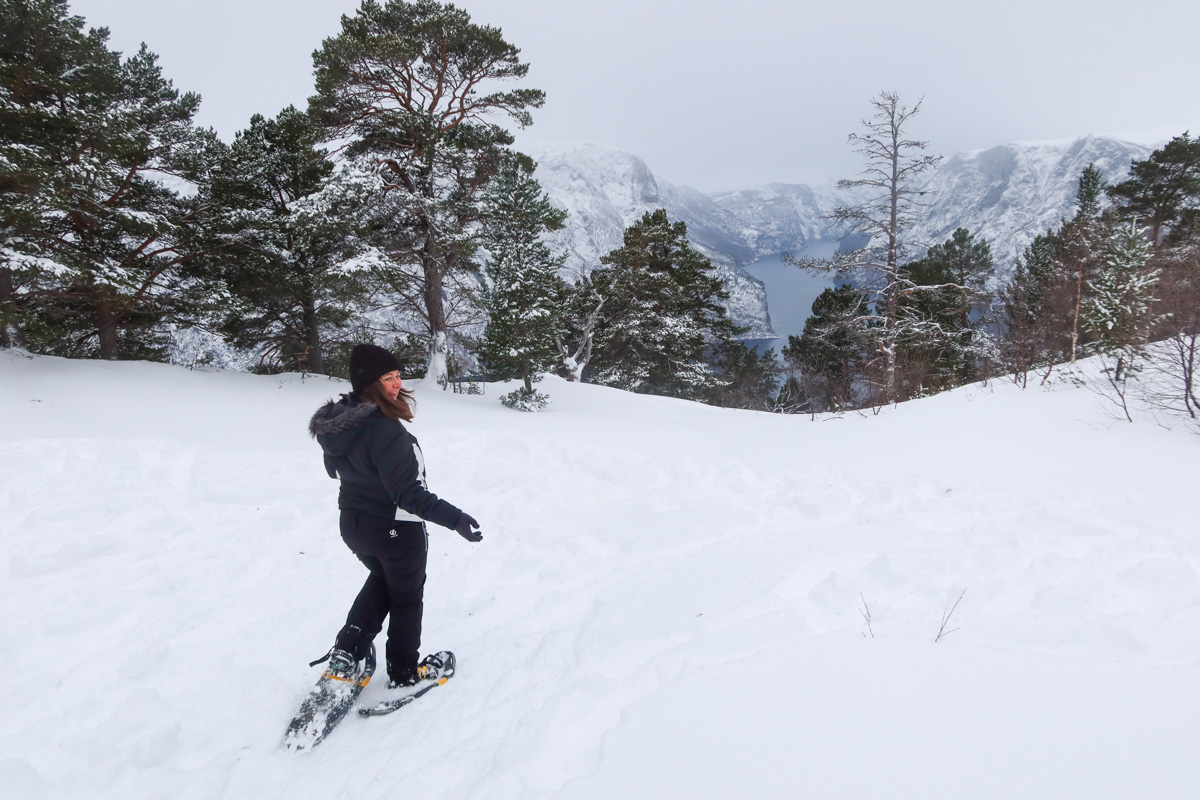
Snowfall in Norway varies considerably depending on the region.
Here’s a closer look at how snowfall patterns diverge across the country.
Eastern Norway
Eastern Norway, home to Oslo, experiences a more continental climate, which means colder winters and significant snowfall.
Snow can start to fall in November and often continues until April.
It’s common to see Oslo’s streets and the surrounding countryside covered in a thick layer of snow during these months!
There are even ski resorts very close to Oslo centre!
Fjord Norway

Fjord Norway, home to the country’s famous fjords and coastal areas, tends to have a milder climate due to the influence of the Gulf Stream.
Snowfall occurs but is typically less heavy and persistent than in the inland and northern regions.
Cities such as Bergen exemplify this, where snowfall is largely possible but often transient due to milder winter temperatures.
When I was in Bergen in February, it didn’t snow at all, but was rather soggy!
It was snowing on the top of Mount Fløyen, which is just a cable car ride from the centre, though!
That being said, the inland regions of this area, like Fjaerland and Flam, have cold temperatures and more persistent snow.
I went to both in February, and they were both real winter wonderlands!
Northern Norway
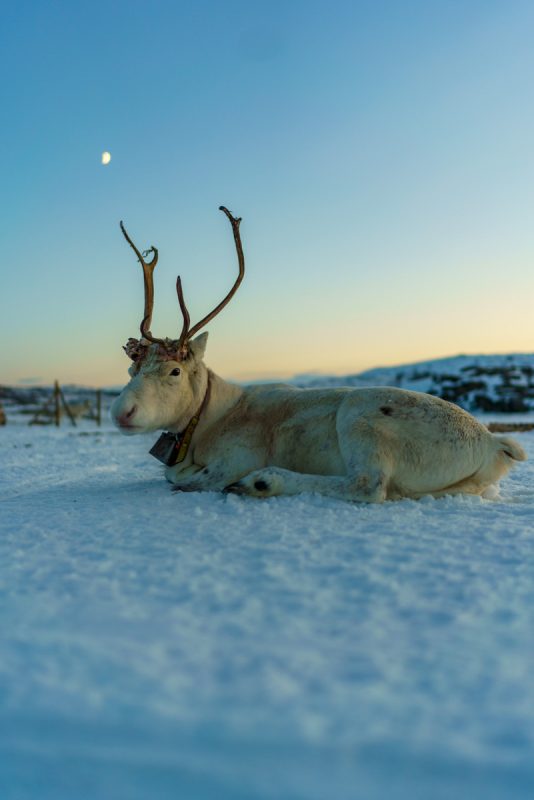
Northern Norway, stretching well into the Arctic Circle, faces extreme winter conditions.
Temperatures drop steeply and the snow season is extended.
While the southern regions might see their first snowfall around late November, cities in the North, like Tromsø, can experience snow as early as September, and it can persist until late April.
However, Tromsø and the Lofoten Islands, being coastal, see less snow than inland areas.
When I was in Tromsø in February, there was snow on the ground, although the temperatures the following week were above zero.
So it’s a bit of a mixed bag, especially with climate change, but generally average temperature is around freezing and snowfall is a big possibility.
In the mountains, you’ll typically find lots of snow and good skiing conditions.
Southern Norway
Southern Norway, known for its charming coastal towns and beautiful archipelagos, experiences a maritime climate with milder winters.
Snowfall occurs, but it’s typically lighter and less frequent than in the eastern or northern regions.
The South Coast is particularly sheltered, with cities like Kristiansand experiencing the occasional snowfall, but less so than the rest of the country.
In fact, you could visit here in the winter months and not see any snowflakes!
Trøndelag
The Trøndelag region, centrally located in Norway, has chilly winters with a fair share of snowfall.
Cities such as Trondheim can see consistent snowfall from late November to early April, depending on the year.
Snow and daily life in Norway
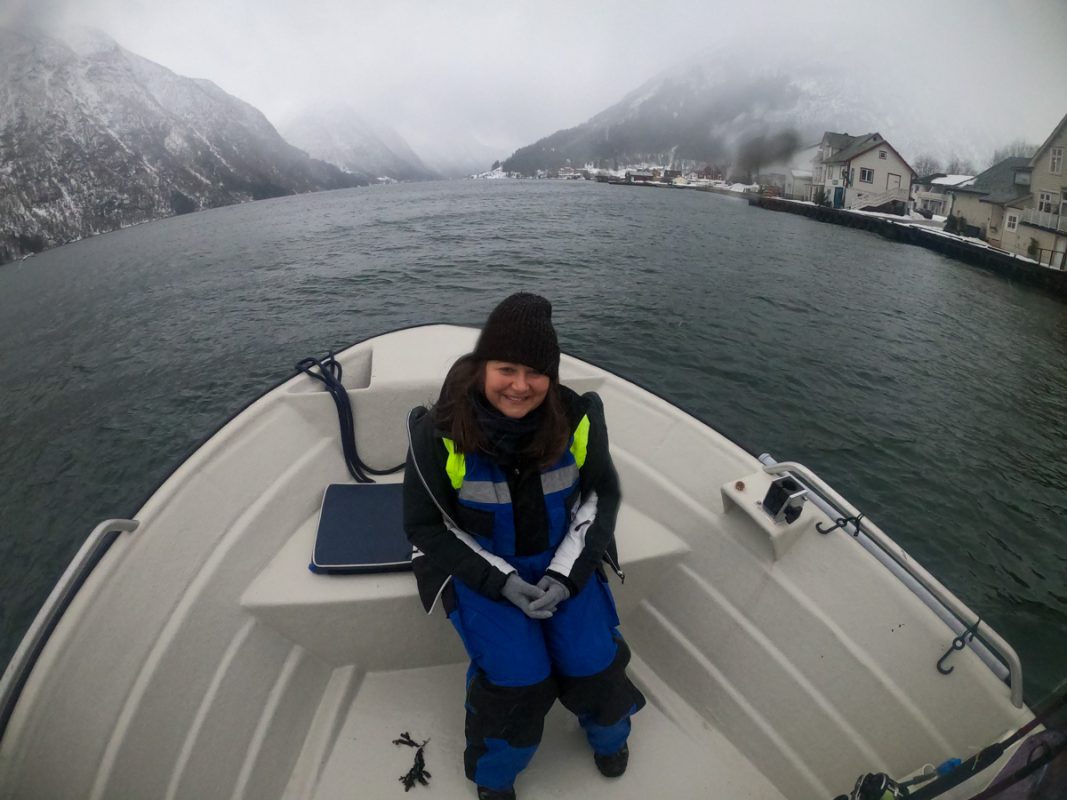
Norway’s residents are accustomed to dealing with snow and have a pragmatic approach towards embracing the winter season – not like us Brits when it snows!
From transport to daily routines and cultural practices, snow plays a significant role in Norwegian life.
Transport
Norwegians have become adept at handling snowy roads and highways (unlike my country, England – we can’t cope in the snow!).
Public transport, including buses and trams, is well-prepared for snowfall, often running with minimal disruptions even during heavy snowstorms.
For private vehicles, winter tires are a necessity and not a suggestion.
Roads are also regularly cleared and salted to prevent icing.
Air travel can be affected by severe weather, with temporary airport closures during extreme conditions.
I actually experienced this when flying from Tromsø to Bergen – we ended up with a four-hour delay, that made us miss our connecting flight!
Daily routines
Norwegians believe there’s no such thing as bad weather, only bad clothing!
This attitude is clear in their daily routines during snowy months.
Schools and workplaces typically remain open, with children bundled up in snowsuits for their walk or sledge ride to school.
Like in Iceland when it snows, it’s not unusual to see people skiing to work in particularly snowy areas!
Culture
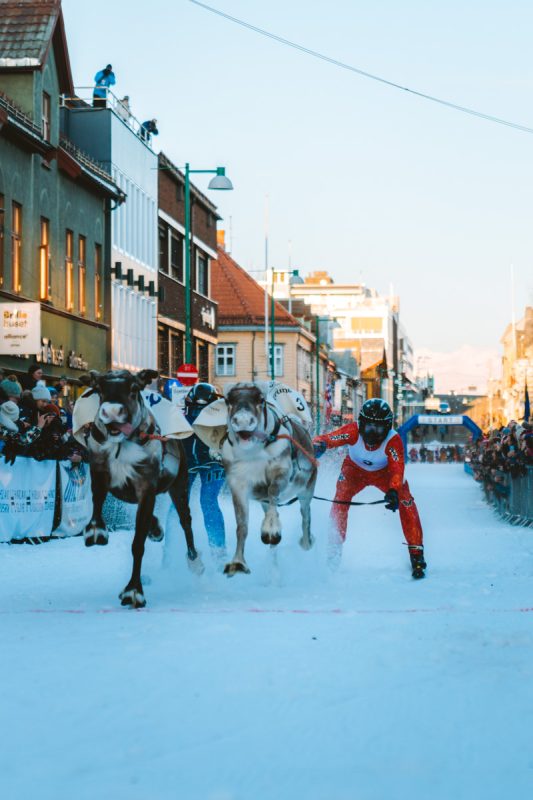
Snow and winter are integral to Norwegian culture.
Numerous winter festivals, often celebrating snow and ice, take place during the colder months.
The love for snow is also evident in Norwegians’ passion for winter sports.
Skiing, snowboarding, ice fishing, and dog sledging are all favourite pastimes.
In the northern region, where the polar night makes the winter days dark, cities light up with beautiful displays of northern lights and Christmas lights.
Sami people live in the north of the country, and much of their livelihood is based around the snow.
Infrastructure and services
Norway’s infrastructure is designed with snowy conditions in mind.
Heating systems are robust, buildings are well-insulated, and snow removal services are efficient and reliable.
Snowploughs, both big and small, are a common sight, clearing everything from major highways to sidewalks and residential streets.
Tips for visiting Norway in the snow
Here are some things to bear in mind if you’re visiting Norway in the snow!
Dress appropriately

The key to comfortably exploring snowy Norway is to layer up!
Start with thermal underwear, followed by a warm sweater or fleece, and finally, waterproof and windproof outerwear.
Don’t forget your winter boots, gloves, scarves, and hats. Keeping dry and warm is essential for enjoying your winter holiday.
Drive safely
If you’re driving, ensure your vehicle is fitted with winter tyres.
Also, do carry a shovel, blanket, and snacks in case of emergency.
Follow the weather forecasts, and if you’re venturing into remote areas or participating in winter sports, let someone know your plans.
I’d also recommend not driving at all unless you have experience in the snow. Locals are much better experienced!
Embrace the great outdoors
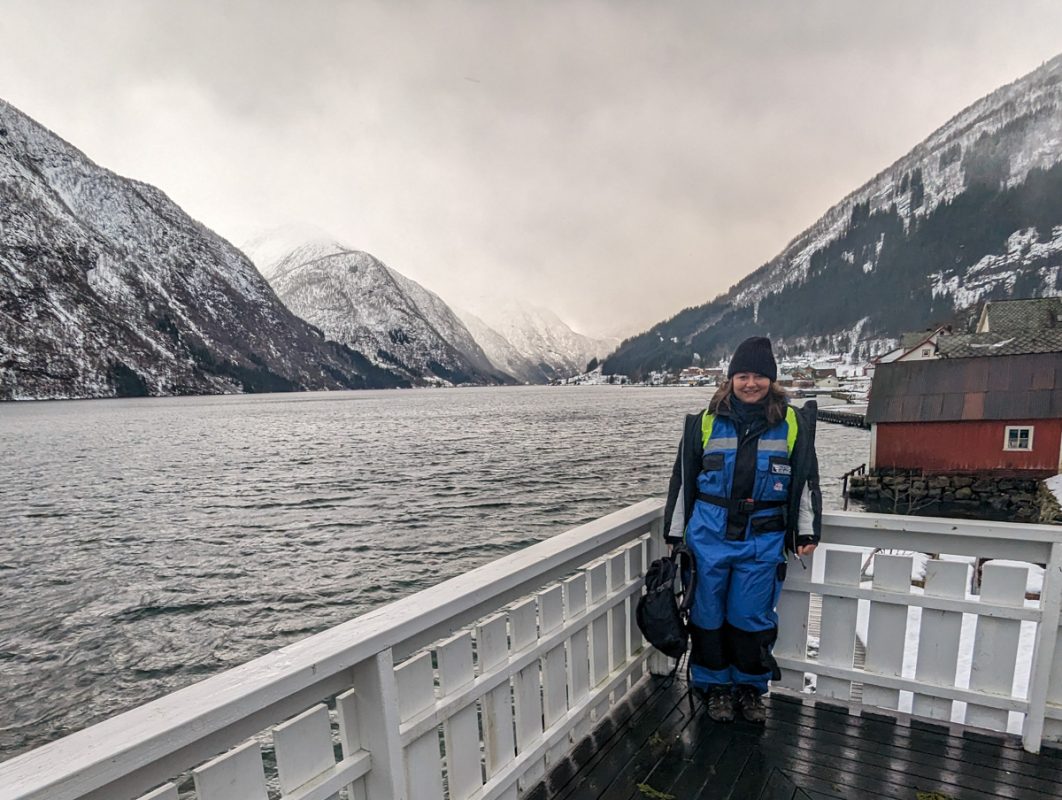
Remember that Norwegian mantra? No such thing as bad weather, only bad clothing!
So bundle up, and enjoy the myriad of winter activities in Norway.
You could try your hand at cross-country skiing or downhill skiing, explore the snow-clad landscapes on a snowmobile, or partake in a dog-sledging adventure.
In the northern regions, winter’s perfect for chasing the northern lights, although my February excursion from Tromsø was a little disappointing (the northern lights in Iceland in January were much better!).
Make the most of Norway’s winter festivals
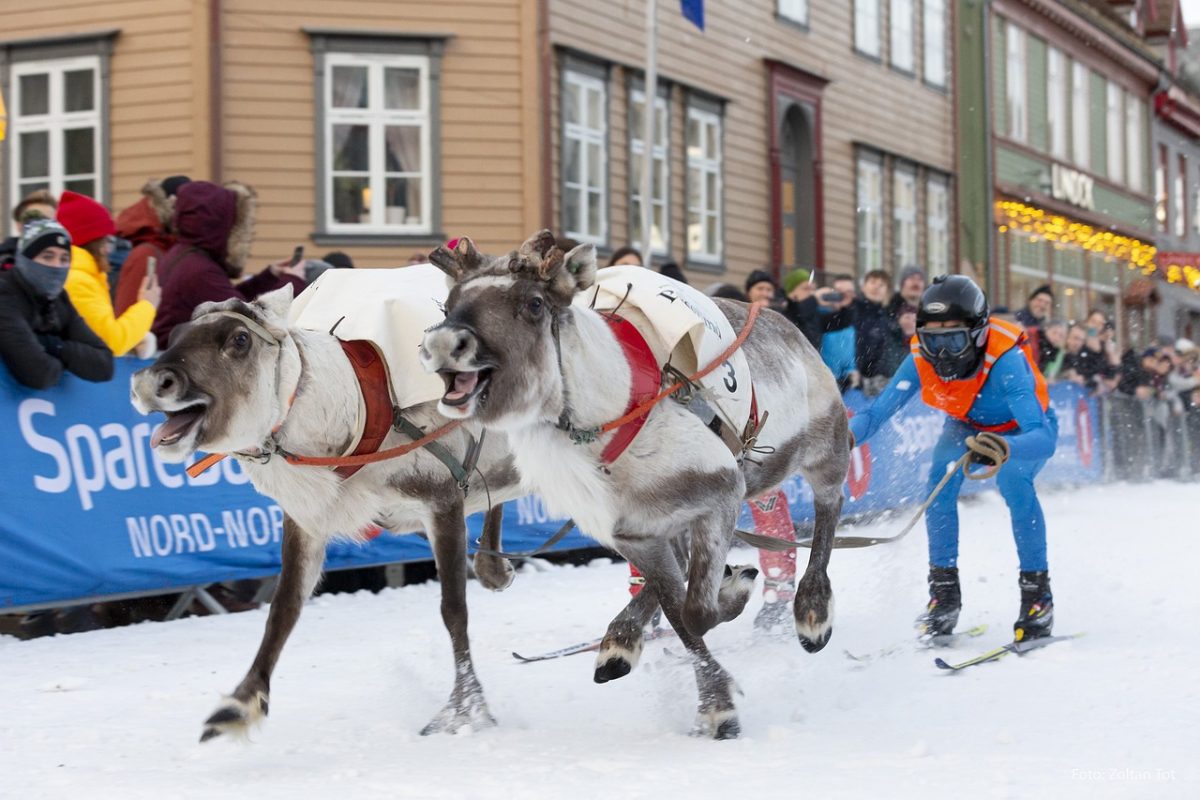
Norway’s winter calendar is dotted with several festivals.
There’s a seafood festival in Bergen (the fish is freshest at this time of year!) and Sami Week in Tromsø (which includes reindeer racing!).
Participating in these events provides a unique insight into Norwegian culture during the winter.
FAQs about snow in Norway

Here are some answers to frequently asked questions about snow in Norway!
What months does it snow in Norway?
Snowfall in Norway typically starts in October and can continue through to April, with the peak snowfall occurring in the winter months of December, January, and February.
The snow season varies depending on the region, with Northern Norway experiencing the longest duration of snow.
Does Norway get snow?
Yes, Norway gets ample snowfall, particularly in the inland and northern regions.
Some places even see snow year-round, such as on the high mountain peaks and in the Arctic regions.
Where is snowing in Norway?
Snowfall can be found across various parts of Norway, especially during the winter months.
However, the regions that see the most snow include Northern Norway, Eastern Norway, and the mountainous areas.
Where is the most snow in Norway?
The most snow in Norway typically falls in the mountainous regions of Eastern Norway and in the high North.
The town of Røros, in particular, is known for its significant snowfall.
Does it snow in Norway at Christmas?
Yes, it usually snows in Norway around Christmas, particularly in the inland and northern regions.
However, a white Christmas is less certain in coastal areas, especially in Southern Norway, where milder conditions prevail.
Is Norway snowy in December?
Yes, Norway typically experiences significant snowfall in December, especially in the inland and northern regions.
The south, being milder, may not always see heavy snowfall, but it still enjoys a wintry feel, particularly in the mountains and highlands.
Are you ready to visit Norway in the snow?
If you’re visiting Norway from November to March, snow may well be on the cards – and hopefully this article’s helped you plan your trip!

